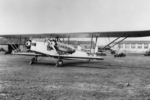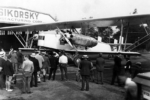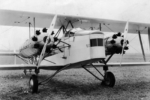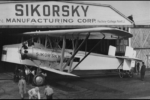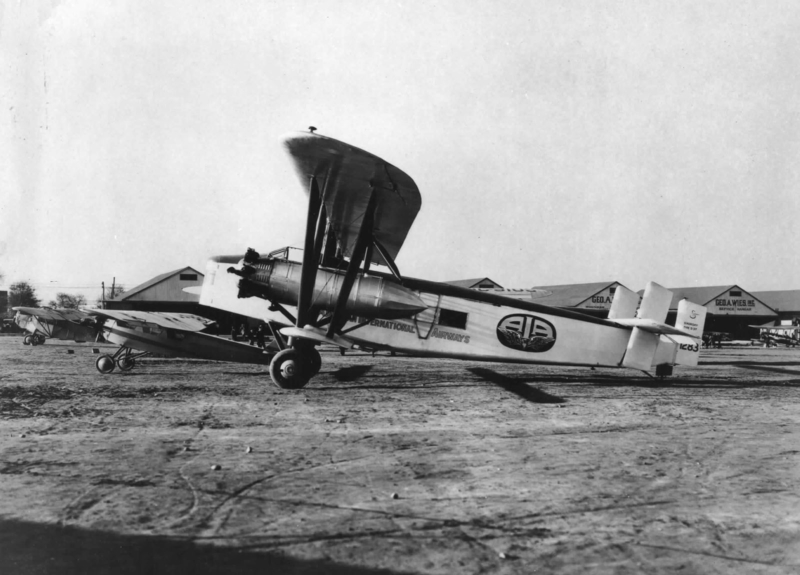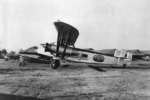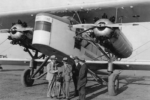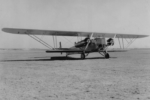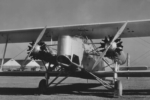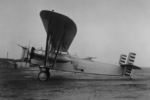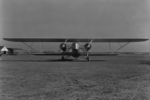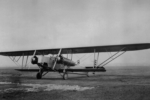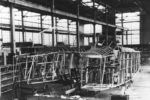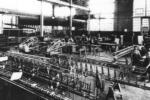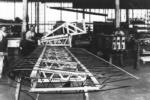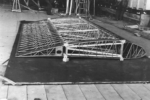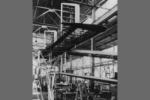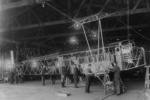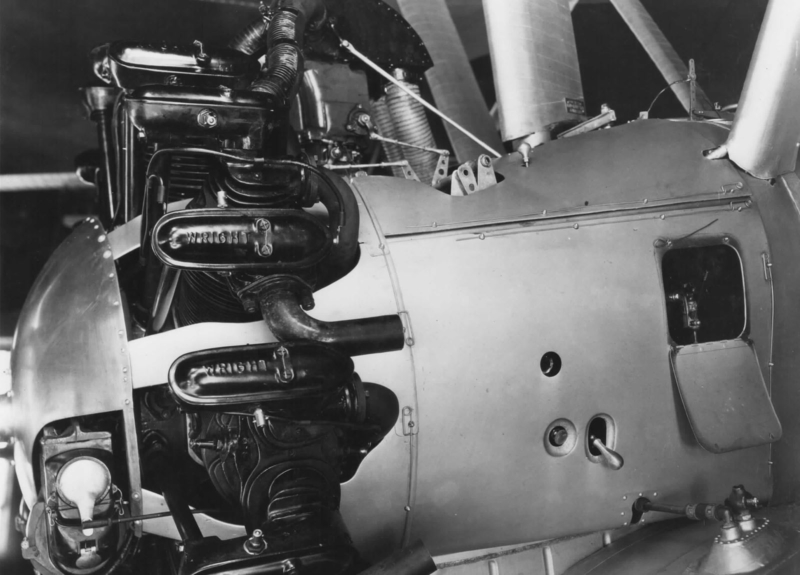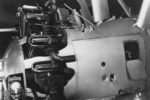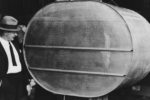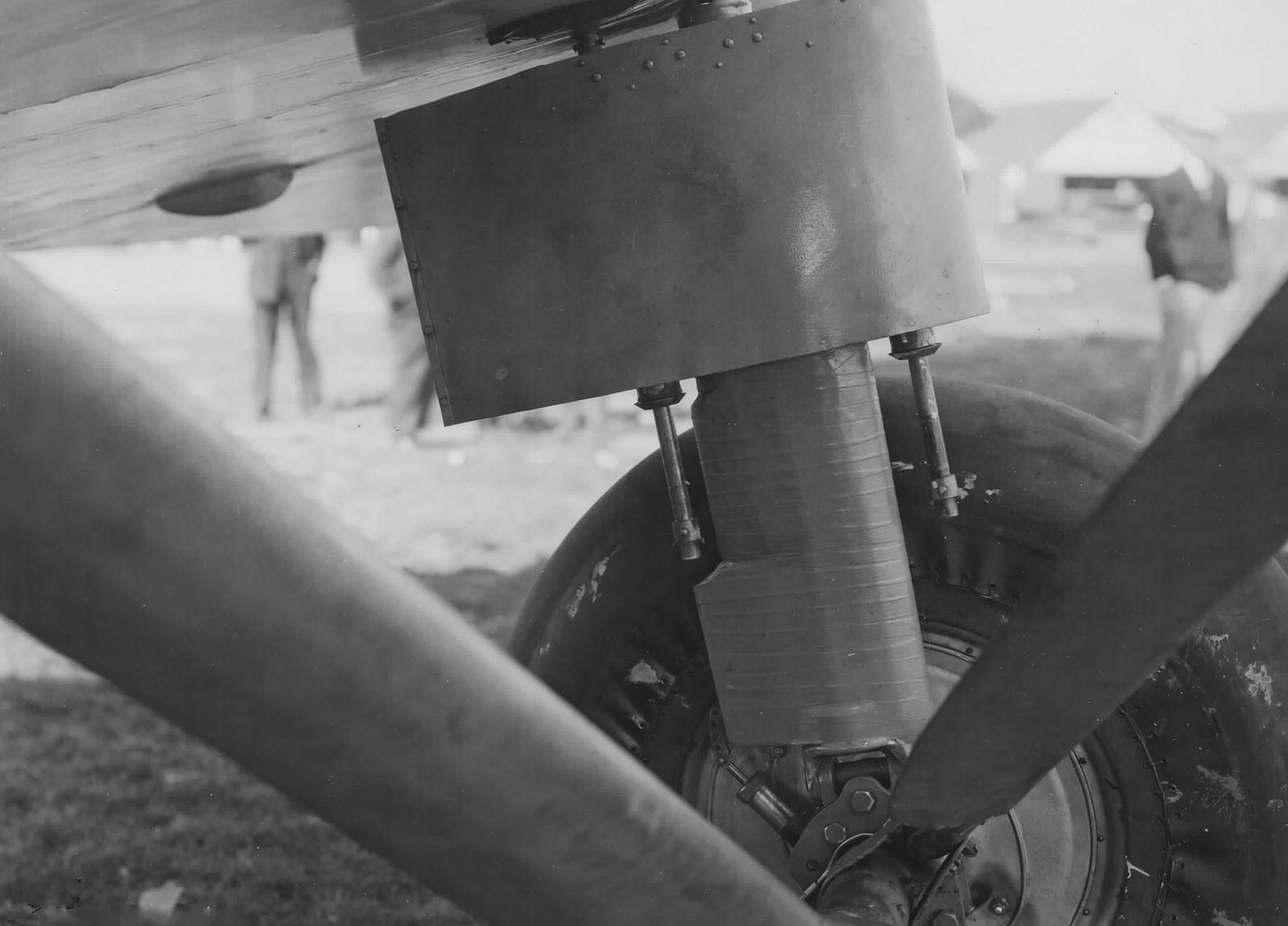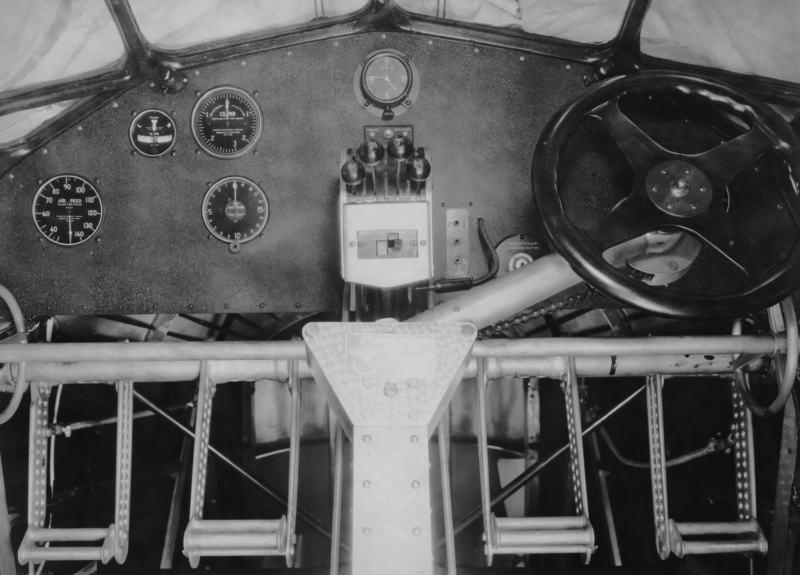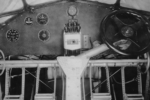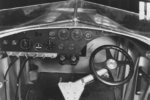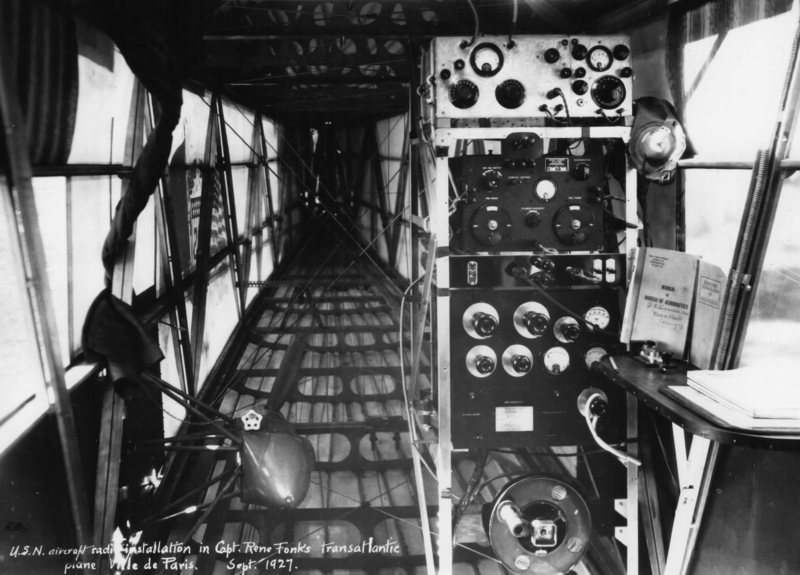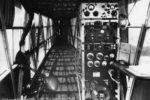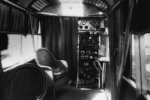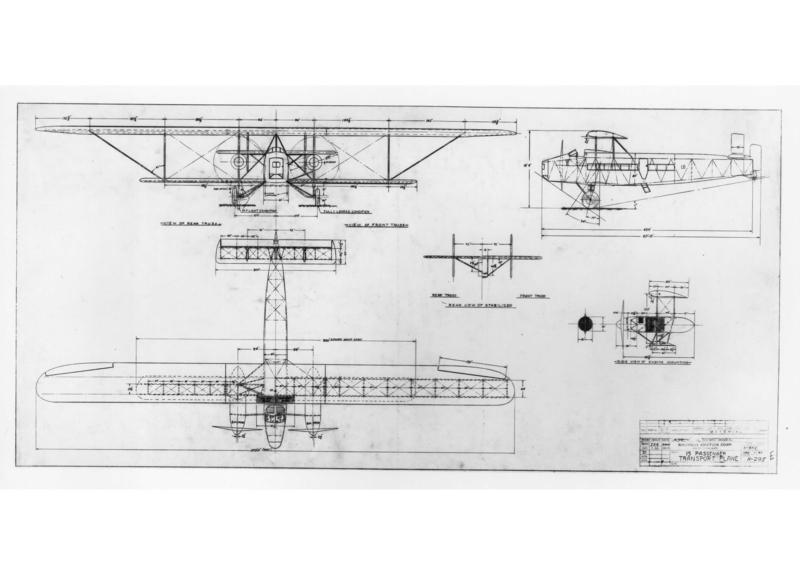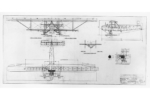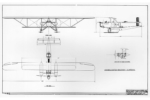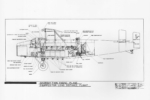Sikorsky Product History
Sikorsky S-37
“[A] successful achievement in the past represents the greatest assurance for the future, even if an accident should temporarily interrupt progress” – Igor Sikorsky reflecting on the S-35 tragedy, The Story of the Winged S
Background
Following the tragic accident of the Sikorsky S-35 in September 1926, Igor Sikorsky first returned to focusing his efforts on the development of his amphibious S-34. This period in Igor’s career he would reflect upon as being one of the gloomiest, with the company deeply in debt, an empty hangar, no customers, and the recent fatal tragedy. However, Captain Rene Fonck, skilled French World War I pilot eager for another attempt at the Orteig prize (valued at $25,000), encouraged him to rejoin the challenge to build the first aircraft capable of a trans-Atlantic flight from New York to Paris. Fonck signed a contract on November 2, 1926, the terms of which included not only the financial requirements, “… but also stipulated that Fonck would have exclusive rights to sell planes of the S-37 type within a 3 year period”, and “… mandated that he sell at least 20 in the third year of the contract or lose the exclusive rights provision.” Leveraging his experiences and knowledge gained from the S-35, Igor created the S-37.
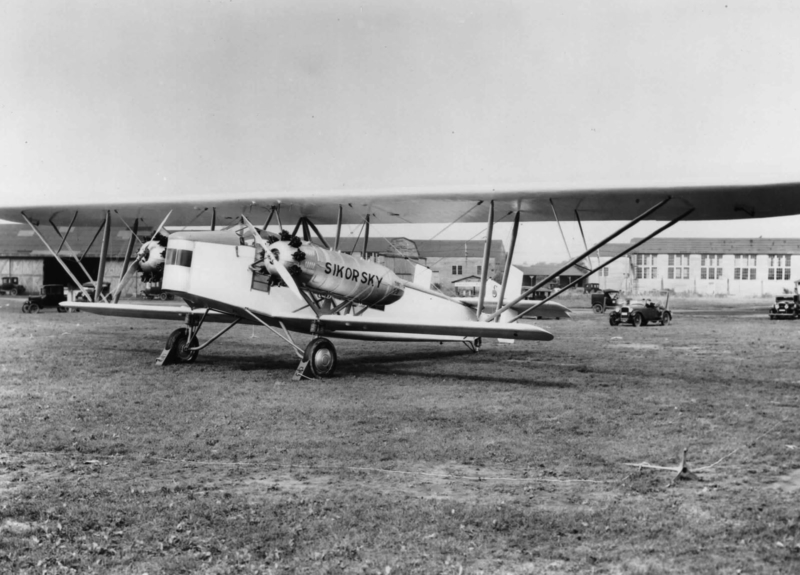 S-37 Ville de Paris, built for Captain Rene Fonck to attempt his trans-Atlantic flight.
S-37 Ville de Paris, built for Captain Rene Fonck to attempt his trans-Atlantic flight. S-37 Ville de Paris on view outside the hangar at Roosevelt Field, Long Island, New York.
S-37 Ville de Paris on view outside the hangar at Roosevelt Field, Long Island, New York. Close up of the completed S-37 Ville de Paris
Close up of the completed S-37 Ville de Paris S-37 Ville de Paris being pushed sideways out of the Sikorsky Roosevelt Field hangar.
S-37 Ville de Paris being pushed sideways out of the Sikorsky Roosevelt Field hangar.
Design of the S-37 began in late 1926. Earlier that spring, Sikorsky Manufacturing Company had moved their operations to a factory in College Point, Queens, New York. This upgraded environment allowed the team to use improved tools and equipment throughout the design and construction of the S-37. The first developed plane, named “Ville de Paris”, was completed in Spring of 1927, following rigorous testing to demonstrate it was more than capable of the trans-Atlantic flight. Its 100 ft upper wing and two air-cooled 500 hp Jupiter engines gave it the heavy-lift performance to take-off with the overloaded weight required for the trans-Atlantic flight. Furthermore, its 120 mph cruising speed and 4000 mile range were enough to reach Paris, France with fuel to spare.
However, Lindbergh beat the team to the prize, with a successful historic trans-Atlantic flight in May of 1927 on the “Spirit of St Louis”. With the pressure to meet the challenge (and incentive for the financial reward, and Fonck’s leaving the contract) now lifted, Igor acknowledged that he was relieved to no longer need to compete, stating “I was more interested in constructive flights. I was glad to get out of these stunt flights where planes were often loaded beyond their capacities and beyond the abilities of their crews. Too many of those early attempts to fly across the oceans ended in tragedy.” Regardless of the outcome of the competition, Igor and Lindbergh had the utmost admiration and respect for one another as pioneers in aviation, and maintained a close friendship, on top of their professional work, throughout their careers.
Shortly thereafter, the Ville de Paris was bought by American International Airways, Inc. of Argentina, with the interest of using it for passenger transport between the US and Argentina. Under the new name “Southern Star”, the S-37 achieved one of her crowning lifetime achievements: on June 30, 1929, it performed the first commercial flight crossing over the Andes Mountains on its journey from Santiago, Chile to Buenos Aires, Argentina, reaching an altitude of 19,000 ft while carrying eight passengers. A telegram to Igor Sikorsky from the airline’s crew radiantly commended the construction of “such [a] great ship”, and she continued her legacy for several years carrying passengers across South America.
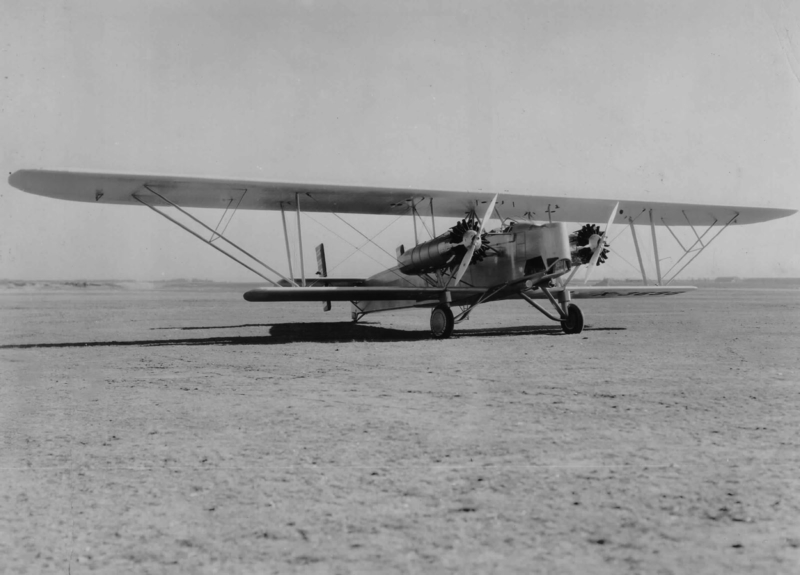 The Consolidated-Sikorsky “Guardian”, designated the S-37-B.
The Consolidated-Sikorsky “Guardian”, designated the S-37-B. Close-up of the Consolidated-Sikorsky S-37-B Guardian
Close-up of the Consolidated-Sikorsky S-37-B Guardian Side view of the S-37-B Guardian with guns shown mounted on the nose and aft fuselage gunner stations.
Side view of the S-37-B Guardian with guns shown mounted on the nose and aft fuselage gunner stations. Front view of the Consolidated-Guardian S-37-B
Front view of the Consolidated-Guardian S-37-B The Consolidated-Sikorsky S-37-B Guardian
The Consolidated-Sikorsky S-37-B Guardian
The second and only other S-37 to ever be constructed was built with cooperation of Consolidated Aircraft Corp. of Buffalo NY, for use by the U.S. Army Air Corps. Built in late 1927, the Consolidated-Sikorsky “Guardian” (designated the S-37-B) was designed as a night bomber, and had unique design features and modifications to accomplish these missions. However, the U.S. Army Air Corps unfortunately showed no interest in the S-37. The Guardian was purchased by New York, Rio and Buenos Aires Airlines (NYBRA), a South American airline competitor to Pan American, and reconverted back for passenger transport. Under the new name “Northern Star”, the second and final S-37 performed commercial flights for the rest of its career. No more S-37s were ever produced – it was unfortunately ahead of its time, with the era of airline passenger service having not yet arrived. With the success of amphibious aircraft and helicopters about to take off, the S-37 was the final land-plane Igor Sikorsky would produce in his career.
Configuration Features
S-37 Design
The S-37 was a twin engine sesquiplane, designed from day one with the necessary heavy-lift performance capabilities for long-range passenger transport. The airframe was largely modeled after the S-35, but with further efficiencies to optimize it for the trans-Atlantic flight. The structure was a metal frame, using open section duralumin (characteristic of Igor’s designs for easy inspection) with steel fittings and struts where necessary. The rigidity of the all-metal structure reduced the vibration levels in the aircraft, which offered an improvement to passenger comfort, as well as extended life of the plane. The airframe was assembled with a combination of rivets and bolts, and all unexposed materials were coated with either a varnish or paint to prevent corrosion in areas which would be difficult to later inspect.
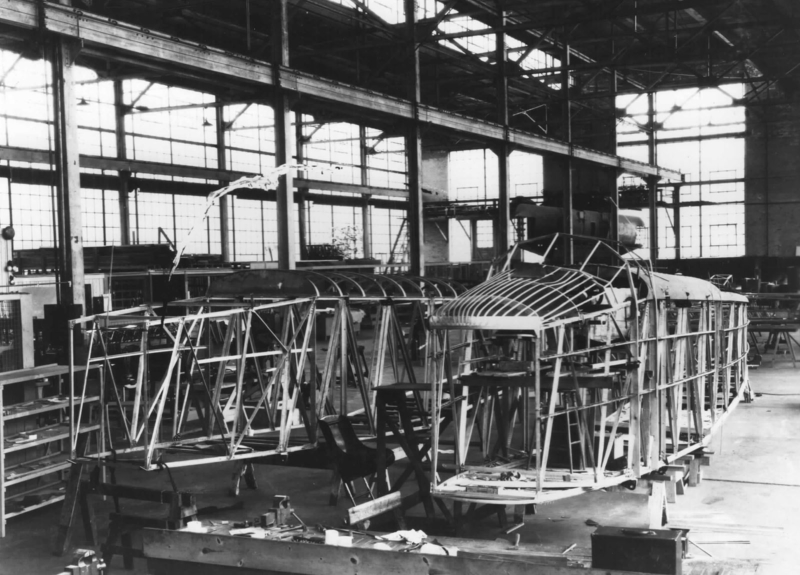 S-37 fuselage under construction at the Sikorsky factory in College Point, New York.
S-37 fuselage under construction at the Sikorsky factory in College Point, New York. S-37 construction, tooling and equipment at the Sikorsky factory in College Point, New York. The College Point factory provided Sikorsky a much larger space with better tools and equipment to fabricate S-37 wing and airframe components.
S-37 construction, tooling and equipment at the Sikorsky factory in College Point, New York. The College Point factory provided Sikorsky a much larger space with better tools and equipment to fabricate S-37 wing and airframe components. S-37 wing fabrication at the Sikorsky factory in College Point, New York.
S-37 wing fabrication at the Sikorsky factory in College Point, New York. S-37 Ville de Paris wing fabrication
S-37 Ville de Paris wing fabrication S-37 tail under construction at the Sikorsky factory in College Point, New York.
S-37 tail under construction at the Sikorsky factory in College Point, New York. Final assembly of the S-37 Ville de Paris at the Sikorsky Roosevelt Field hangar. Note the working environment of the Roosevelt Field hangar compared to the improved factory in College Point, New York.
Final assembly of the S-37 Ville de Paris at the Sikorsky Roosevelt Field hangar. Note the working environment of the Roosevelt Field hangar compared to the improved factory in College Point, New York.
In sesquiplane design, the larger upper wing is the primary lifting surface, while the smaller lower wing functions more as a structural member. The main wing was constructed of Duralumin and wrapped in canvas. The airfoil on the main wing was the S-G-4, which had a high L/D ratio and therefore great lift characteristics. Reliability and safety being paramount, the S-37 was designed to load factors required by the U. S. Government Air Services for night bombers, which ended up being necessary for the Guardian design, and conservative for the passenger transport configurations.
Additional unique design changes were made to the control surfaces on the second S-37, including larger rudders and removal of the adjustable tail fin. The Jupiter engines were replaced by Pratt & Whitney Hornet engines for additional power. Additionally, the Guardian was equipped with floats.
Engine
The first S-37 developed was powered by two Gnome Rhone Jupiter 9A 500 hp air-cooled engines.
The second developed (S-37-B) was powered by two P&W Hornet A-525 hp engines.
The engines were installed on either side of the cockpit, between the upper and lower wings. As safety was a critical feature in all of Igor’s designs, the rudders (and engines) were sized such that in the event of a single engine failure, the rudder could counteract the yawing moment of the airplane to enable a controlled emergency landing.
Steel propellers 10’3” in diameter were installed on each of the engines.
Fuel was primarily carried in four tanks located aft of the engines, gravity fed by tanks in the leading edge of the upper wing, which also offered additional storage capacity.
A network of lines allowed for the transfer of fuel between tanks, with flow motivated by either a wind driven pump outside the fuselage, or a hand pump accessible from the cockpit. Fuel quantities and flow direction could be monitored via glass tubes on a fuel control board located aft of the cockpit.
Additionally, a small two-cylinder engine, capable of starting by hand, was installed beneath the cockpit, which functioned as the starter for the two main engines.
Landing Gear
The S-37 was designed with the conventional type landing gear with two forward wheels and a tail skid, which allowed the two developed aircraft to perform multiple flights throughout their careers. The wheels were 44” diameter and 10” wide, and incorporated hydraulic brakes which could be controlled via a lever in the cockpit, with differential control from the rudder pedals. Both the front wheels and the aft landing skid utilized an oleo cylinder for shock absorption upon landings.
Cockpit
The cockpit of the S-37 had dual side by side control, with a hinged mechanism that allowed to swing the controls in front of either seat. It had a fixed windshield, but was otherwise adjustable via sliding flexible windows on the sides to convert between an open and enclosed configuration. The pilots’ seats were cushioned, as well as adjustable, allowing them to set their seats to a desired position for flight. Control pedals were of the stirrup type. Navigation instruments and the stabilizer adjustment wheel were located inside the cockpit, while the engine instruments and gauges were located on the engine cowls, visible from the cockpit.
Furnishings
Located aft of (and a few steps beneath) the cockpit, the cabin of the S-37 was approximately 16 ft long, 4.5 ft wide and 6 ft in height. The cabin was designed to carry between 12-16 passengers, depending on configuration, with the S-37-B even being retrofitted at one time to carry 20. This was possible because of the unobstructed cabin space, due to the strategic locating of the fuel tanks aft of the engines. Windows, made of safety glass, were spaced the length of the cabin. The first aircraft served as a passenger aircraft throughout its lifetime, and as such, the floor and ceiling were made of plywood, and the interior walls surrounding the windows were padded with Balsam Wool, which provided an insulative barrier from the cold ambient temperatures in flight. The second aircraft, designed originally as a night bomber, had a more utilitarian cabin. In lieu of passenger armchairs, racks were installed for carrying four bombs. These were designed to be located as near to the center of gravity as possible to minimize stability issues with sudden changes in aircraft weight and center of gravity during a flight. Later when it was converted from the “Guardian” to the “Northern Star”, the bomber mission equipment was removed, and the cabin configured to carry passengers.
In the aft-most part of the main fuselage was the radio equipment. The receiver and transmitter were installed on a fixed rack, but the generator was designed on a swinging mount, such that when not in use, it could be pulled inside the airframe to improve aerodynamic efficiency. The Guardian additionally retrofitted the aft fuselage to incorporate a gunner station (referred to also as the aft cockpit). Two crew in the aft operated the two machine guns as well as the radio equipment.
A final design difference between the two aircraft was in the forward nose bay. The Ville de Paris utilized this space primarily as a baggage compartment, but could also be retrofitted to carry either an additional two passengers or supplemental fuel for long range flights if required. The Guardian alternatively had a shatterproof glass window in the lower part of the fuselage to provide the bomber visibility to his surroundings.
Further details of both the Ville de Paris and Guardian were published in September 26, 1927 and January 16, 1928 articles respectively in Aviation Magazine (now known as Aviation Week & Space Technology).
General Arrangement Drawing
General Characteristics and Performance
| Performance – Standard Day at Sea Level | |
|---|---|
| High Speed | 128 mph / 111 kts / 206 km/hr |
| Cruising Speed | 120 mph / 104 kts / 193 km/hr |
| Maximum Rate of Climb | 750 ft/min / 3.8 m/s |
| Service Ceiling | 15,000 ft / 4572 m |
| Weights | |
|---|---|
| Maximum Takeoff Gross Weight | 14,200 lbs / 6441 kg |
| Weight Empty | 8000 Lbs / 3628.7 kg |
| Maximum Fuel Load | 550 Gal / 2082 ltr |
| General Data | |
|---|---|
| Crew Seating Capacity | 2 (Ville de Paris) 5 (Guardian) |
| Seating Capacity | 18 (Ville de Paris/Southern Star) 20 (S-37-B Northern Star) |
| Powerplant Ratings Standard Day at Sea Level | |
|---|---|
| Gnome Rhone Jupiter 9A (S-37) | 500 hp (372.9 kw) @ ZZ rpm |
| Pratt & Whitney Hornet (S-37-B) | 525 hp (391.5 kw) @ 1900 rpm |
| Aircraft Dimensions | |
|---|---|
| Span, Upper Wing | 100 ft / 30.5 m |
| Span, Lower Wing | 58 ft 4 in / 17.8 m |
| Length Overall | 46 ft (S-37) 45 ft (S-37-B) |
| Height Overall | 16 ft 2 in / 4.9 m |
| Total Wing Area | 1074 sq. ft / 100 sq. m |
| Loading per Horsepower | 15 Lbs / 6.8 kg |
Production History
Only two S-37 aircraft were ever produced, as there was insufficient demand at the time for large vehicle commercial air transport.
by Dana Halline
Related Articles
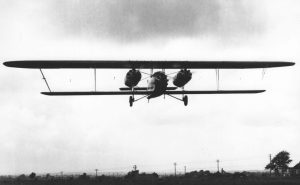
Wings Over The Atlantic
On September 21, 1926, the first attempt at a non-stop flight across the Atlantic Ocean ended in failure. Fraught with controversy, indecision and just plain bad luck, the ill-fated venture had little chance at success from the outset.
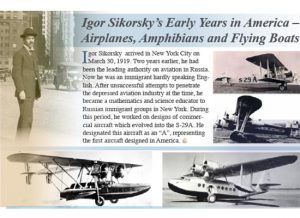
Igor Sikorsky’s Early Years in America
Igor Sikorsky’s developed aircraft, amphibians and flying boats during his early years in America.

